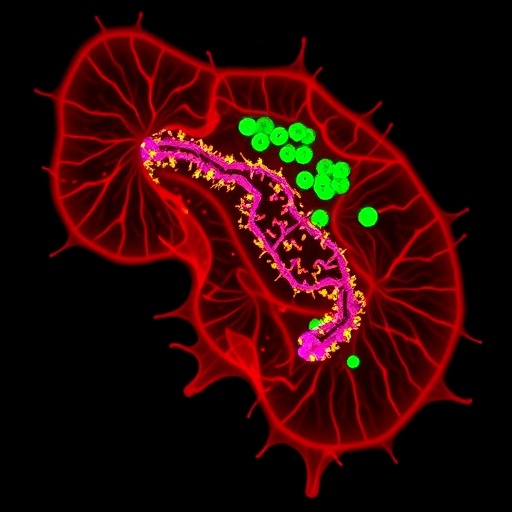The International and American Associations for Dental Research (IADR/AADR) have published an article titled “Periodontitis in Chédiak-Higashi Syndrome: An Altered Immunoinflammatory Response” in the JDR Clinical & Translational Research (JDR CTR). In this study, Vivek Thumbigere Math, from the National Institute of Arthritis and Musculoskeletal and Skin Diseases (NIAMS), National Institutes of Health (NIH), and authors from other institutes of NIH as well as the State University of Campinas, Piracicaba Dental School, Piracicaba, SP, Brazil sought to determine the periodontal status of patients with severe and mild forms of Chédiak-Higashi syndrome (CHS), a rare genetic disorder caused by mutations in the lysosomal trafficking regulator gene (LYST) — a gene that codes for a protein that helps with protein packaging and transport within cells.
Chédiak-Higashi syndrome is characterized by a type of albinism that affects the eyes, skin and hair as well as abnormal bleeding, recurrent bacterial infections, impaired immune and neurological function, and is often associated with aggressive periodontitis. Previous research suggests that LYST mutations affect toll-like receptors (TLRs), leading to frequent infections. TLRs comprise a family of proteins that normally senses bacterial threats and helps generate a host response to disease-causing bacteria.
This study investigated the periodontal status in patients with “classic” or more severe CHS, and patients with “atypical” or more moderate CHS. The researchers also examined the effect of LYST mutations on expression of two members of the TLR family, TLR-2 and TLR-4, and on the immune-regulating functions of gingival fibroblasts in CHS patients. Gingival fibroblasts help form the tooth-supporting gum tissue and secrete cytokines and other molecules that facilitate cell-to-cell communication. As a standard of care, all patients with classic CHS had undergone bone marrow transplantation (BMT), while none of the atypical CHS patients received BMT.
The authors noted that in contrast to aged-matched healthy individuals, atypical CHS patients and classic CHS patients exhibited mild chronic periodontitis with no evidence of gingival ulceration, severe tooth mobility, or premature exfoliation of teeth. Compared to gingival fibroblasts obtained from healthy donors, gingival fibroblasts obtained from classic CHS patients and atypical CHS patients displayed higher baseline expression of TLR-2 and lower baseline expression of TLR-4. When treated with extract from Fusobacterium nucleatum, a species of bacteria associated with periodontal disease, gingival fibroblasts from both classic and atypical CHS patients failed to increase production of TLR-2 and TLR-4 compared to the untreated cells or cells from healthy patients. Researchers also found that when exposed to F. nucleatum extract, gingival fibroblast cells from patients with atypical CHS expressed increased cytokine production compared to gingival fibroblast cells from classic CHS patients. These results suggest that LYST mutations may affect TLR-2 and TLR-4 expression and function, and lead to a dysregulated immunoinflammatory response, which in turn influences the periodontal disease phenotype noted in CHS patients.
“This study provides a better understanding of the molecular mechanisms governing the periodontal disease process and perhaps other situations in which the patients have altered TLRs and immune cell dysfunction,” said JDR CTR Editor Jocelyne Feine. “This is also the first study to report the periodontal findings in atypical CHS patients and it raises new hypotheses for future research, plus the need for personalized intervention strategies tailored to an individual’s host response.”
This study can be used to create awareness among clinicians and researchers that not all CHS patients exhibit historically reported aggressive periodontitis. The results also show that periodontitis susceptibility in CHS is mainly mediated by hematopoietic cells — the cells that give rise to immune cells and other blood cells — and that classic CHS patients who underwent a bone marrow transplant early in life and atypical CHS patients are less susceptible to aggressive periodontitis when compared with classic CHS patients who never receive BMT.
The investigators of this study express their sincere gratitude to research patients and their families, as well as the grant funding institutions. The study was supported by the NIAMS (under award numbers ZIAAR041196 and K99AR069643), the National Human Genome Research Institute, and the National Institute of Allergy and Infectious Diseases.
To read “Periodontitis in Chédiak-Higashi Syndrome: An Altered Immunoinflammatory Response” please visit http://journals.sagepub.com/doi/abs/10.1177/2380084417724117 or contact Elise Bender [email protected] to access the article.
About JDR Clinical & Translational Research
The International and American Associations for Dental Research JDR Clinical & Translational Research is dedicated to publishing original research at the interface between discovery science and clinical application, with the translation of research into healthcare delivery systems at the individual patient, clinical practice, and community levels. Please visit www.iadr.org/jdrctr for more information about JDR Clinical & Translational Research.
About the International Association for Dental Research
The International Association for Dental Research (IADR) is a nonprofit organization with nearly 10,500 individual members worldwide, dedicated to: (1) advancing research and increasing knowledge for the improvement of oral health worldwide, (2) supporting and representing the oral health research community, and (3) facilitating the communication and application of research findings. To learn more, visit www.iadr.org. The American Association for Dental Research (AADR) is the largest Division of IADR, with nearly 3,500 members in the United States. To learn more, visit www.aadr.org.




